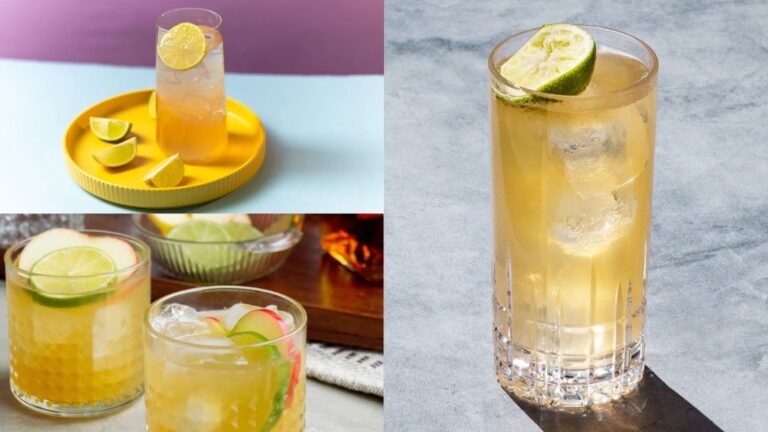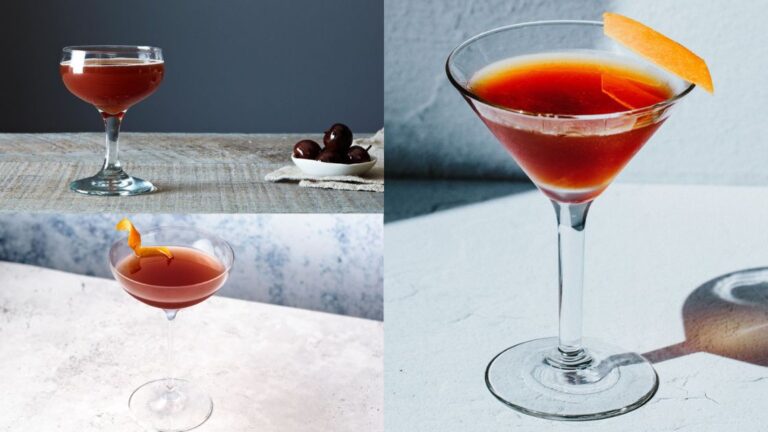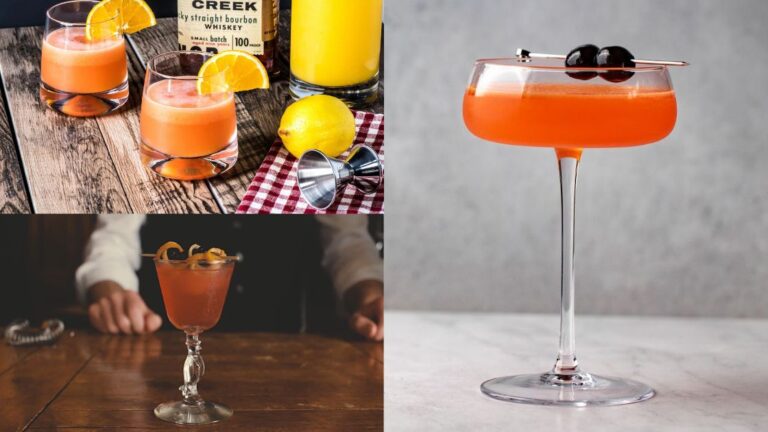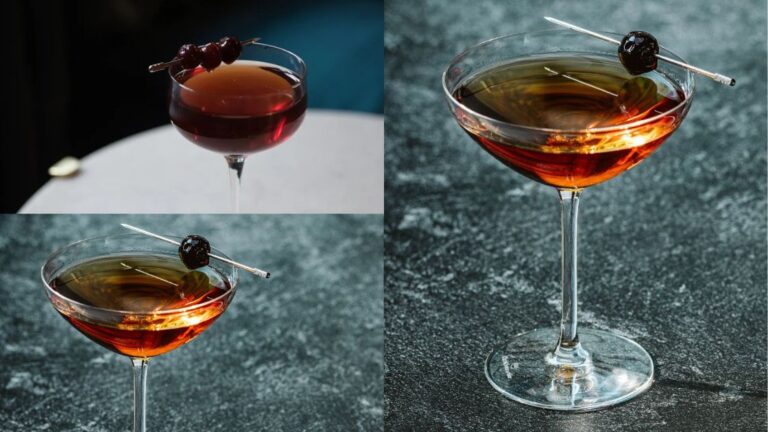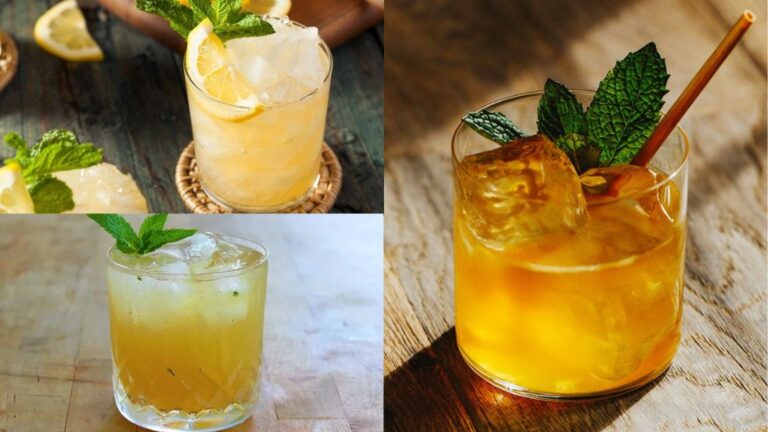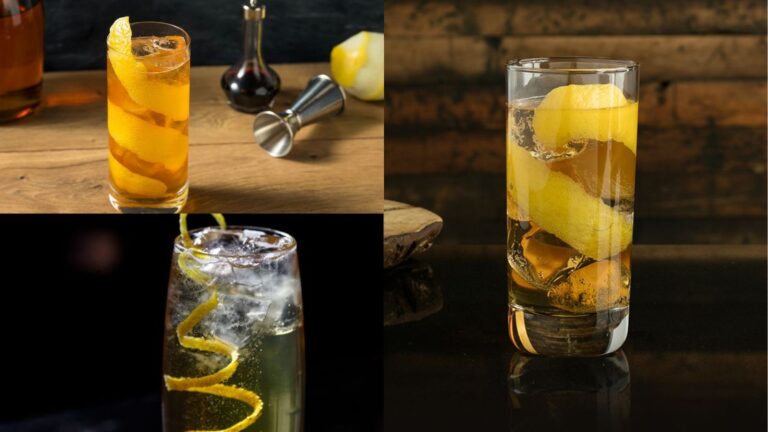Whiskey has a rich history and a wide range of styles, leaving many wondering how it’s best enjoyed. One of the most common questions is whether whiskey is meant to be drunk straight. The answer isn’t as clear-cut as some might think, as it depends largely on personal preference and the type of whiskey in your glass.
What Does “Drinking Whiskey Straight” Mean?
When we say “drinking whiskey straight,” we’re talking about consuming it without any mixers or dilution—just pure whiskey poured into a glass. You might hear this referred to as “neat” in bars and restaurants. While some whiskey enthusiasts swear by drinking their whiskey straight, others enjoy experimenting with water, ice, or mixers to enhance different flavors.
The Argument for Drinking Whiskey Straight
Many purists believe that whiskey is best enjoyed neat because this method allows you to appreciate the full complexity of the spirit. Whiskey is a carefully crafted beverage, and each element—the grain, distillation process, and aging—adds unique layers of flavor. Drinking it straight allows you to experience those elements without interference.
When you drink whiskey straight, you can savor its natural aromas and let its flavors unfold as it sits in your glass. The initial sips might be bold, but as the whiskey aerates, you’ll notice subtle changes in the taste. For many whiskey lovers, this is one of the most enjoyable aspects of the drink.
Why Some Whiskey Fans Add Water
While straight whiskey has its appeal, adding a splash of water is another common practice that can actually enhance your experience. The addition of a small amount of water helps to “open up” the whiskey, unlocking more subtle aromas and flavors that might otherwise be masked by the alcohol content. This is particularly helpful for higher-proof whiskeys that might feel too harsh when drunk straight.
The key here is moderation. You don’t want to drown the whiskey in water—just a few drops can make a noticeable difference. This is a simple way to customize the drinking experience without overwhelming the natural qualities of the whiskey.
What About Ice?
Adding ice to whiskey is another option for those who find drinking it straight a bit too intense. Ice cools the whiskey and dilutes it over time, softening the burn of the alcohol and mellowing out stronger flavors. Some whiskey drinkers enjoy this gradual shift, as the taste evolves with each sip as the ice melts.
However, using too much ice can mute the whiskey’s flavor, especially if it’s a high-quality or well-aged spirit. Many whiskey lovers prefer large ice cubes or whiskey stones, which chill the drink without watering it down too quickly.
Is Mixing Whiskey a No-Go?
For whiskey connoisseurs, the idea of mixing whiskey with cola or ginger ale might seem sacrilegious, but there’s no wrong way to enjoy a drink if that’s your preference. Whiskey cocktails have a long history, from the classic Old Fashioned to the refreshing Whiskey Sour. Mixing whiskey with other ingredients can highlight its flavors in a different way, making it accessible for those who aren’t used to the strength of drinking it straight.
If you’re just starting your whiskey journey, don’t be afraid to experiment. Some people find that they appreciate the flavor of whiskey more after trying it in a well-made cocktail. From there, you can explore other ways to enjoy whiskey—whether neat, with water, or on the rocks.
Does the Type of Whiskey Matter?
The style of whiskey you’re drinking can influence whether you might prefer it straight or with a little something extra. For instance:
- Bourbon: Many bourbon fans enjoy sipping it neat to fully appreciate its sweet, caramel-like notes, but bourbon also pairs well with a splash of water or an ice cube.
- Scotch: Single malt Scotch is often savored neat to experience its full depth, though a drop of water is sometimes added to enhance the flavors.
- Rye Whiskey: Known for its spicy kick, rye whiskey can be a bit intense straight, so adding ice or water can help tame its bite without losing its character.
- Irish Whiskey: Lighter and smoother, Irish whiskey is often enjoyed neat but also mixes well in cocktails.
The Final Word: It’s Your Choice
Ultimately, whether whiskey is meant to be drunk straight comes down to how you like it. There’s no right or wrong answer. Whiskey is a versatile spirit, and the way you drink it should reflect your personal taste.
If you enjoy the boldness of a neat pour, then whiskey straight might be your go-to. If you prefer to soften the intensity with a splash of water or an ice cube, that’s perfectly acceptable too. The beauty of whiskey is that it offers something for everyone, whether you’re a seasoned enthusiast or a newcomer to the world of spirits.
So next time you’re pouring yourself a glass of whiskey, don’t feel pressured to drink it a certain way. Try it straight, add a bit of water, or experiment with ice until you find what works best for you. After all, the best way to enjoy whiskey is the way that makes you happiest.
Tasting Whiskey Like a Pro
Whether you’re a whiskey rookie or a seasoned sipper, fine-tuning your tasting can take your experience to a whole new level. So, here’s the scoop on how to swig whiskey like a champ:
Opening Up Your Palate
To start, grab a whiskey with an ABV between 40% and 47%, just enough to give your taste buds a gentle nudge. This way, you won’t hit them like a freight train, but instead, they’ll slowly start revealing the whiskey’s nuances. Tossing in a splash of water can also do wonders, mellowing the burn and letting those sweet, floral, and even salty notes shine through. Water’s like a little magic trick for your glass!
| Whiskey Type | ABV Range |
|---|---|
| Light Whiskey | 40% – 47% |
| Strong Whiskey | 50%+ |
For some pro tips on sipping, swing by our guide on how to drink whiskey.
Food Pairings for Whiskey Tasting
Pairing whiskey with the right munchies can seriously level up your tasting game. Think simple — a chunk of French bread, a nibble of plain cheese, or even a stick of celery to reset your palate. Or go wild with a bit of crispy bacon, a handful of spiced nuts, wasabi peas, breadsticks, banana pudding, or some chocolate. Yeah, you heard right: chocolate (Food and Wine).
These snacks keep your taste buds on their toes, letting you savor every bit of the whiskey’s character.
Get more dirt on whiskey’s character in our whisky vs bourbon showdown.
Starting with the Best Whiskey
Kick things off with the priciest bottle in your stash. Don’t save the best for last because by then, your palate might be a little too cozy to catch all the flavors. Start strong while your taste buds are fresh and ready to roll.
For fans of a good sip sans mix, check out our piece on jack daniels bourbon.
Follow these pointers and you’ll be well on your way to savoring whiskey in all its glorious complexity. Cheers to that!
Spice Up Your Whiskey Adventure
Getting the most outta your whiskey can really bring out hidden hints, balance everything out, and make tasting feel like a whole new world. Let’s get you sipping smarter with these quick tips.
Splash a Little Water on It
Droppin’ a bit of water in your whiskey? Now that’s a game-changer. It slows down that alcohol punch and wakes up those sweet, flowery, and salty surprises you didn’t even know were there. They call it “releasing the serpent” for a reason—hidden goodies just waiting to pop out!
Wanna add water like a pro? Take a peek at our whisky with water tips.
Braving the Smoke: Peaty Treats
Those peaty drinks? Yeah, they’re kinda like sipping on a campfire, so you gotta tackle ’em the right way. Start and stick with them for the whole round, or ease into it with something sweet and fragrant first. This way, your tongue ain’t all shocked by the smoke, letting you spot other tastes hanging around.
Need more tasting tricks? Check out how to drink whiskey.
Sip Straight: Top Picks
Some whiskeys are smooth like butter, made to be sipped straight, no fuss, no muss. Here’s a quick shot of top picks:
| Whiskey | Rating (out of 5) |
|---|---|
| Jameson Irish Whiskey | 4.8 |
| Angel’s Envy Rye Whiskey | 4.7 |
| Jim Beam Black Extra Aged Bourbon Whiskey | 4.6 |
Credits to Total Wine for the deets.
These babies bring a flavor party without any bite—perfect for going neat.
Curious about whiskey choices? Dive into our discussions on whisky vs bourbon, jack daniels bourbon, or makers mark whisky. And while you’re at it, decode the lore of whisky vs whiskey.
Using these handy tips and choosing primo whiskeys will crank up your tasting adventures by a notch or two. Happy sipping!
Unraveling Straight Whiskey
Getting a handle on “straight whiskey” lingo can really up your appreciation game for this particular kind of drink. Here’s the scoop on what makes straight whiskey stand out, its rulebook, and the story behind those no-no ingredients.
Definition and Characteristics
Straight whiskey’s a special breed of American whiskey that prides itself on pure and simple methods. It’s like a secret recipe, needing to come from a brewed mix of grains and taking a nap for at least two years in brand-new, charred oak barrels. Unlike its American whiskey cousins, straight whiskey shuns things like added flavors or caramel coloring sneaking in the mix (Distiller).
Key Traits of Straight Whiskey:
- Snoozes for a minimum of two years.
- Hangs out in new, charred oak barrels.
- Says no to flavor or caramel coloring shortcuts.
Legal Standards for Straight Whiskey
The whole legal jazz for straight whiskey kicked off way back in 1909 when President Taft laid down the law. Initially, this was all about bourbon having to keep to new, charred barrels, and then it spread to other whiskey types.
| What It Means | Details |
|---|---|
| Minimum Nap Time | 2 years minimum |
| Barrel Type | New, charred oak barrels only |
| Additives | Zip, zilch, zero |
Stick to the rules or else! If a whiskey doesn’t play by these rules, it might pull off adding a little something up to 2.5%—but it can’t call itself “straight.” Want to know how this shakes up the whiskey game? Check out our whiskey vs bourbon article here.
Additives in American Whiskeys
Straight whiskey walks the straight and narrow, but other American whiskeys sometimes spice things up legally with additives (as long as they don’t carry the “straight” label). You can find stuff like flavors and caramel color just making it all look prettier and tastier (Distiller).
Additives in Non-Straight American Whiskeys:
- Who doesn’t love flavors?
- Caramel coloring for that snazzy look
- Any other extra ingredients up to 2.5%
Knowing straight whiskey keeps it natural makes it the purer pick compared to its buddies. Want to explore more on what affects whiskey’s taste? Have a peep at our scotch vs whiskey guide here.
Following these guidelines, straight whiskey holds onto its original taste and pure vibes, giving you a genuine experience. Whether you like it plain or are just dipping your toes into various styles, straight whiskey is your no-frills option in the wide world of American whiskey. For tips on sipping whiskey like a pro, click here how to drink whiskey.
Exploring Whiskey Flavors
Getting into whiskey flavors means exploring a bunch of stuff like how long it’s aged, what glass to use, and the best ways to sniff and sip it. These things really jazz up the whole whiskey experience.
Impact of Aging on Flavor
Time in the barrel does wonders for whiskey’s taste. It’s like magic, the wood plays a part in giving whiskey its color and flavor – darker whiskey means bolder taste, trust me.
Check out the table for how long aging affects flavor:
| Aging Time | Color Depth | Flavor Depth |
|---|---|---|
| 1-3 Years | Light Amber | Fresh, Slight Fruit |
| 4-7 Years | Medium Amber | Smooth, Hints of Vanilla and Spice |
| 8-12 Years | Dark Amber | Rich, a Blend of Oak and Caramel |
| 13+ Years | Deep Brown | Bold, Strong like Dark Chocolate and Tobacco |
Recommended Glassware
Picking the right glass can take your whiskey sipping to the next level. Give the Glencairn glass a shot. It’s got a chubby bottom and a skinny top to catch the smells, and it’s perfect for a good pour (Oak & Eden).
Best glass choices for whiskey tastings:
- Glencairn Glass: Great for aromas, comfy grip
- Tulip Glass: Keeps the smells nice and cozy
- Rocks Glass: Good all-rounder, better for mixes
For more glass tips, swing by our article on how to drink whiskey.
Smelling and Tasting Whiskey
Tons of what you taste comes from what you smell. Sniffing your whiskey before sipping holds the secret. When they say “retronasal breathing,” they’re onto something cool—it boosts your tasting game.
Here’s how to get the most out of smelling and tasting whiskey:
- Nose the Whiskey: Get the glass under your nose and breathe slow. Jot down any scents.
- Swirl the Whiskey: Swish it around to wake up more aromas. Get your nose back there for any new smells.
- Take a Small Sip: Let it marinate in your mouth. Search for different flavors.
- Retronasal Breathing: Exhale through your nose while the whiskey hangs out in your mouth for a flavor boost.
- Evaluate the Finish: See how long the flavor lingers and what notes hit at the end.
Want to take it further? Try out other whiskeys like bourbon, rye, and Scotch.
Mastering the art of aging, glass picking, and tasting tricks means you’ll really get why whiskey is such a big deal. For more cool reads, peek at our takes on whisky vs whiskey and whiskey drunk effect.
Decoding Bartending Jargon
Figuring out the lingo in bars isn’t just for bartenders; it amps up your whiskey game too. Getting terms like neat, up, and straight up right is your ticket to getting exactly what you ordered.
Neat, Up, and Straight Up
In a bar, neat, up, and straight up aren’t just fancy words—they mean different things. Mix these terms up, and you might sip something unexpected.
- Neat: Just a pour of liquor, like whiskey, right from the bottle into your glass. No chilling, no extras (Jeffrey Morgenthaler).
- Up: This one’s a cocktail mixed with ice, but strained into a glass without it—usually in a fancy cocktail glass.
- Straight Up: Usually a fancy way to say neat, but it pays to double-check. Say whiskey “straight up,” and your bartender might serve it neat, unless you pipe up about wanting it chilled.
| Term | Meaning |
|---|---|
| Neat | Liquor from bottle to glass, no chills |
| Up | Cocktail mixed with ice, then strained, no ice remains |
| Straight Up | Often means neat, but clarify if you want it chilled |
Avoiding Miscommunications in Orders
To sip happily, chat clearly with your bartender. Say you ask for Wild Turkey “straight up,” they might think neat. Yearning for it chilled in a cocktail glass? Say “up,” and confusion takes a hike (Jeffrey Morgenthaler).
With mixed drinks, spill the details. Bartenders have their own styles, so if you want a twist, spell exactly how you like it (Jeffrey Morgenthaler).
Nailing the slang of bartending boosts your whiskey fun. Curious for more? Check out our guide on how to drink whiskey.
Understanding Bourbon, Rye, and White Whiskey
Whiskeys each bring their own thing to the table—different flavors for different folks.
- Bourbon: This American classic is mostly corn (at least 51%) and loves its charred oak barrels. Tastes sweet, nice and full-bodied.
- Rye Whiskey: Packs at least 51% rye punch, with spice and grit. It’s bolder, with a loud taste compared to bourbon.
- White Whiskey: Sometimes called “white dog,” it skips the aging or barely ages. It’s clear, with strong grain flavors.
| Type | Main Ingredient | Characteristics |
|---|---|---|
| Bourbon | At least 51% corn | Sweet, rich flavor |
| Rye Whiskey | At least 51% rye | Spicy, bold flavors |
| White Whiskey | Unaged or scarcely aged | Clear, grain-heavy taste |
Digging into the flavors of bourbon, rye, and white whiskey helps you choose what suits your taste buds. Explore the scoop on whisky vs bourbon and jack daniels bourbon for a deeper whiskey dive.
